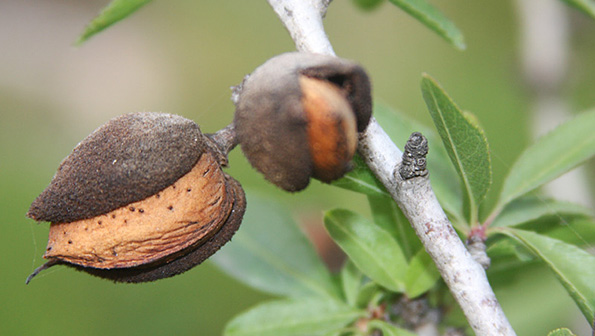Almonds may guzzle up water, but they're great at keeping carbon in the soil—which might just redeem them in the midst of California’s record drought.
Almonds may guzzle up water, but they're great at keeping carbon in the soil—which might just redeem them in the midst of California’s record drought.


#Almonds may guzzle water, but they're excellent at keeping carbon in the soil (via @deliciousliving) #climatechange
Despite their health benefits and incredible popularity, almonds have fallen short of achieving saint status in the eyes of the environmentally conscious for one major reason: They’re far from a water efficient crop. On average, it takes a gallon of water to produce a single almond. That means your typical 16-ounce jar of almond butter requires around 450 gallons of water to produce.
Yikes.
When you consider that California, the nation’s leading producer of almonds, is currently undergoing its worst drought in 1,200 years, this thirsty crop seems all the more problematic. But as TakePart writes, recent studies have shed light on an important benefit to keeping those one-million-plus acres of California almond crops alive: carbon sequestration.
Almonds, along with other perennial crops, suck up CO2 and keep it in the soil. Since perennial crops stay in the ground all year long, they help keep carbon locked inside of the soil instead of released back into the atmosphere (which occurs when annual crops die in the off-season).
According to an analysis of the carbon life cycle in the almond industry, well-managed almond crops can potentially capture and sequester (bury) more carbon than they emit—around 38 percent more, if all the hulls, shells, and other biomass produced by nut farming were burned as a renewable fuel source.
Even with current practices, however, California almond farms have already stored an amazing amount of carbon over the years. The Ecological Society of America estimates that 14.5 million metric tons of carbon were sequestered between 1980 and 2000 alone. Hey—thanks, almonds!
Agriculture is currently responsible for around 14 percent of all greenhouse gas emissions. If more farms transitioned away from annual row crops and planted an increased number of perennials—like almonds—that percentage could take a serious dive.
The more farmers recognize and implement the benefits of carbon capture, which increases the health of the soil and the nutrient content of foods, the closer agriculture will come to being an ally in the climate change fight, instead of a problem. And that's something worth celebrating.
Perhaps with a tablespoon of almond butter.
